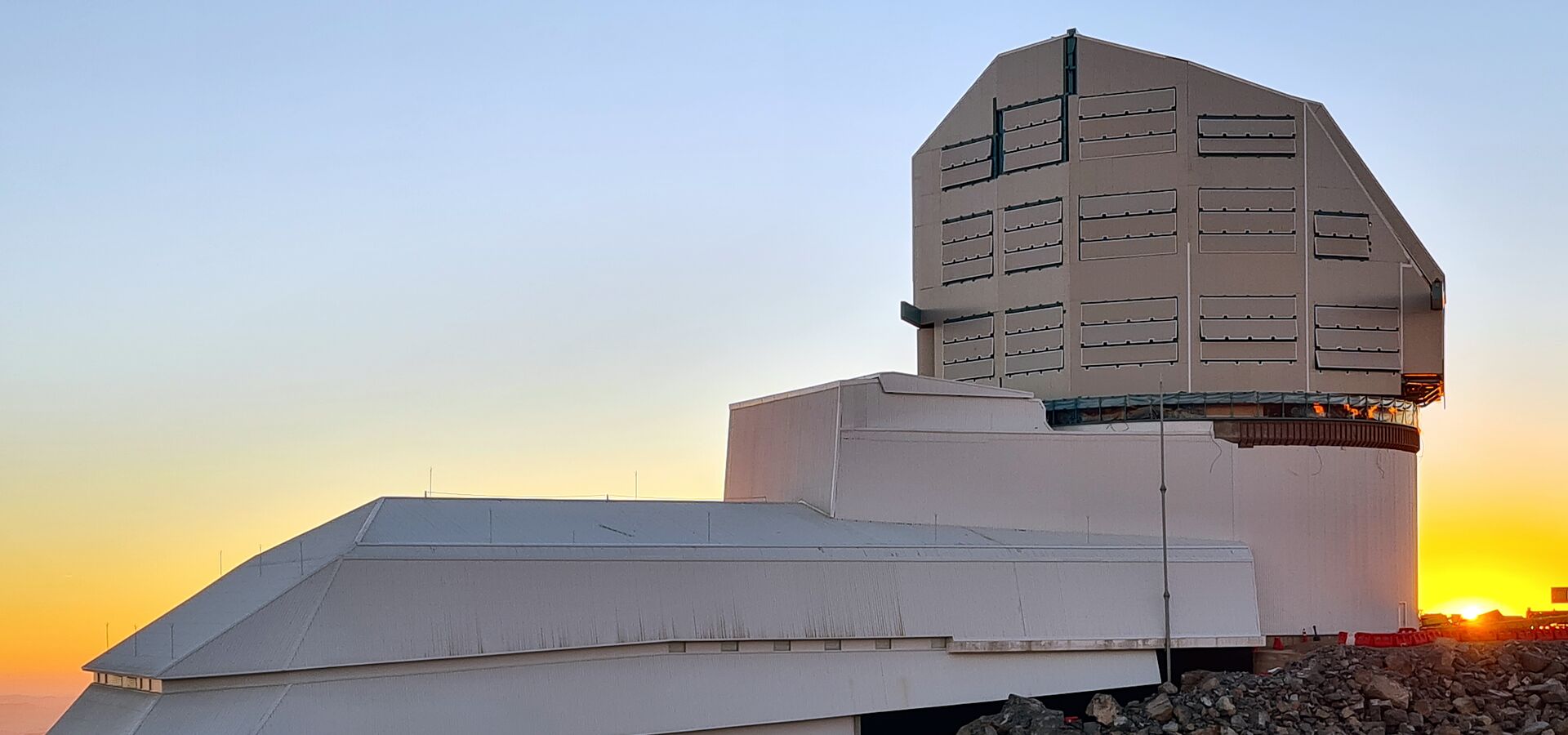NSF–DOE Vera C. Rubin Observatory
NSF–DOE Vera C. Rubin Observatory, currently under construction on Cerro Pachón in Chile, is an 8-meter-class telescope coupled to a 3200 megapixels camera – the world’s largest digital camera ever fabricated for optical astronomy.
NSF–DOE Vera C. Rubin Observatory, currently under construction in Chile, will conduct an unprecedented, decade-long survey of the optical sky called the Legacy Survey of Space and Time (LSST). Once Rubin Observatory begins operations it will revolutionize the field of astronomy and what we know about the Universe.
The Simonyi Survey Telescope is named after Charles Simonyi's family, in recognition of his significant gift early in the construction phase in support of the design, development, and fabrication of the telescope’s primary mirror.
Rubin Observatory is not just a telescope, it’s a complex, integrated system consisting of an 8-meter class wide-field ground-based telescope, a 3.2-gigapixel camera, an automated data processing system, and a public engagement platform. Rubin Observatory seeks to enable science in four main areas:
- The nature of dark matter, and understanding dark energy
- Cataloging the Solar System
- Exploring the changing sky
- Milky Way structure and formation
The Telescope
The 8.4-meter Simonyi Survey Telescope features a unique three-mirror design, which creates an exceptionally wide field of view. The telescope will operate on an automated cadence, surveying the entire visible sky every few nights. The telescope is located on the Cerro Pachón ridge in north-central Chile, approximately 100 km (60 miles) by road from the support town of La Serena, where the Rubin Observatory Base Facility is located.
The Rubin Auxiliary Telescope will provide important complementary data throughout survey operations.
The Camera
The LSST Camera built by Department of Energy's SLAC is the largest digital camera ever constructed for astronomy — it’s roughly the size of a small car and weighs almost 2800 kg (6200 lbs). The focal plane consists of 189 charge-coupled device (CCD) sensors arranged on 21 “rafts” for a combined 3.2 gigapixels. The camera includes an automated filter-changing system with six filters: u,g,r,i,z, and y.
The Data
Dedicated computer facilities will process Rubin Observatory data in real time, issuing worldwide, public alerts within 60 seconds of detected changes in the sky. Rubin Observatory will generate approximately 20 terabytes of data per night, and over its ten-year survey will produce a 15 petabyte catalog database.
Public Engagement
A subset of data will be widely available through Rubin Observatory’s Education and Public Outreach (EPO) dynamic website, which will offer tools and activities for formal educators, citizen scientists, informal science centers, and the general public to engage, explore, and discover.
Rubin Observatory was the top-ranked large ground-based project in the 2010 Astrophysics Decadal Survey. First Light is anticipated in mid-2025.
The astronomical community is honored to have the opportunity to conduct astronomical research on Cerro Tololo and Cerro Pachón in Chile. We recognize and acknowledge the very significant cultural role and reverence that these sites have to the local communities in Chile.
NSF and DOE will support Rubin Observatory in its operations phase to carry out the Legacy Survey of Space and Time. They will also provide support for scientific research with the data. During operations, NSF funding is managed by the Association of Universities for Research in Astronomy (AURA) under a cooperative agreement with NSF, and DOE funding is managed by SLAC under contract by DOE. Rubin Observatory is operated by NSF’s NOIRLab and SLAC.
Travel information for Rubin Observatory is available here.
Visit the Rubin Observatory Science website


